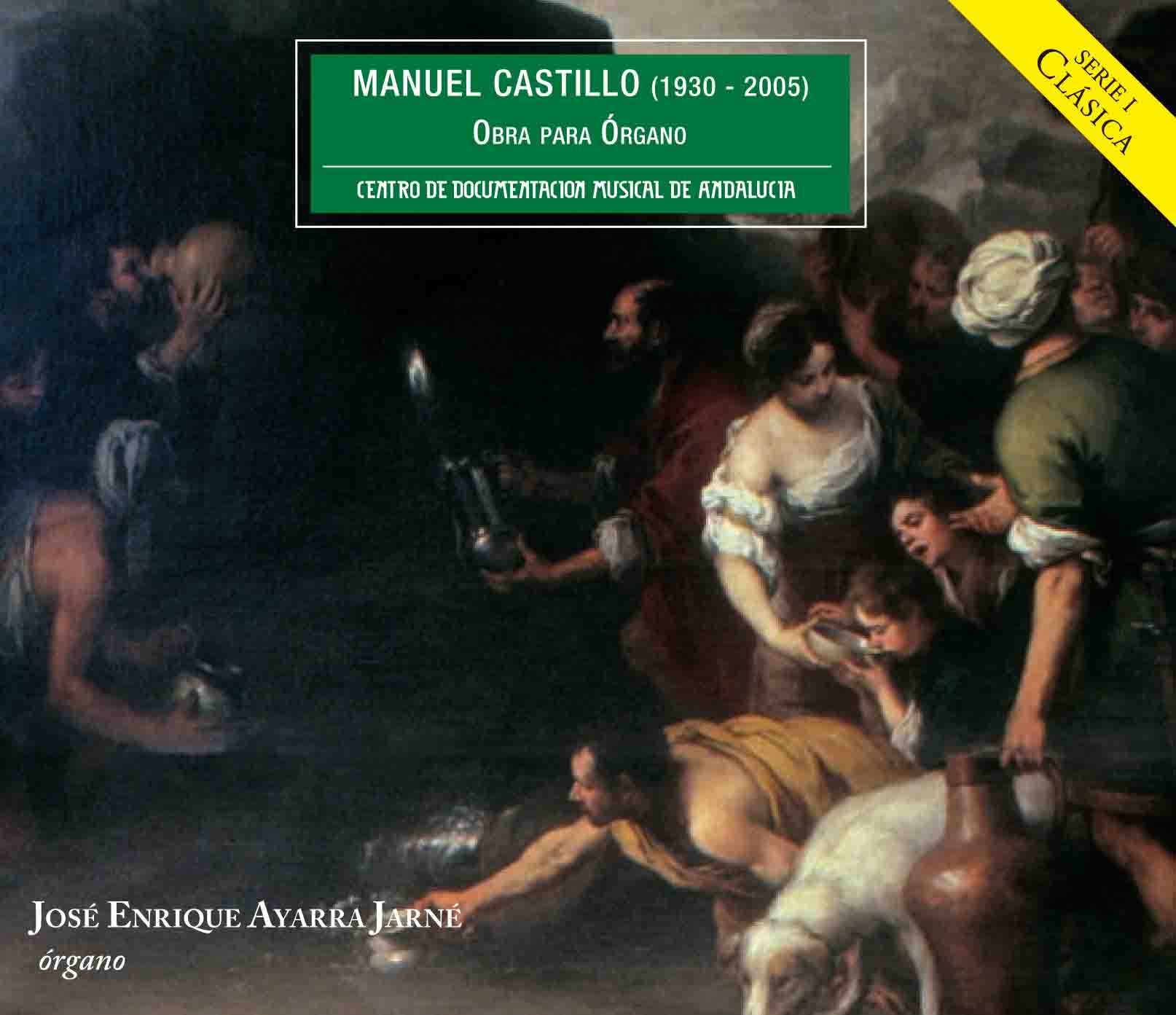Obra para Órgano - Manuel Castillo (1930-2005)
Detail DS-0151 You can buy this record here 21 € Obra para Órgano - Manuel Castillo (1930-2005) Manuel Castillo (1930-2005) CD 1
1.- Fantasía para un libro de órgano (1972) 5’15
2.- Elevación (1957) 2’48
3.- Diferencias para órgano sobre un tema de Manuel de Falla (1976) 9’29
4.- Hi Accipient. Fantasía sobre un tema gregoriano (1960) 6’47
5.- Cuatro Cuadros de Murillo (1982) I. Anunciación 3’37 II. Niño Jesús 3’01 III. Virgen con el Niño (Diferencias) 5’55 IV. Adoración de los pastores 3’29
6.- Suite para órgano (1956) I. Lento, ma non troppo 3’13 II. Allegretto- Scherzando 4’23 III. Largo 2’02 IV. Solemne
CD 2
1.- Modo Antiquo (1994) I. Preludio 2’10 II. Recitativo 1’55 III. Tiento 1’26 IV. Fantasía 3’41
2.- Preludio, Tiento y Chacona (1972) I. Preludio 3’17 II. Tiento 4’18 III. Chacona 4’21
3.- Variaciones sobre un tema de Almandoz (1990) 14’58
4.- Sinfonía para Órgano (1991) I. Moderato 7’51 II. Allegretto 3’45 III. Intermezzo 4’39 IV. Finale 7’52 3’5
CD 3
1.- Retablos de los Venerables - Ocho Meditaciones para Órgano (1993) I. Inmaculada 2’14 II. San José 2’36 III. Santa Rita 1’50 IV. Oración en el Huerto 3’27 V. San Jerónimo VI. La Concepción VII. Crucificado VIII. Última Cena
2.- Concierto Sacro Hispalense para Órgano, Metales y Timbales (1997) I. Tota Pulchra II. Ave María III. Veni Creator
Grabación realizada en los órganos del Coro de la Catedral de Sevilla, excepto 'Modo Antiquo', grabada en el órgano la Epístola (Francisco Rodríguez, 1802) de la Iglesia de San Juan de Marchena (Sevilla). |
About Tomás Marco, a great connoisseur of Manuel Castillo’s oeuvre and personality, has defined this Sevillian master as “the Spanish composer of his generation who has served the organ world the most frequently and with the highest quality” (Manuel Castillo, Transvanguardia y Postmodernidad. Málaga 2003: 74). Marco remarks that between a generation of illustrious musicians such as Cristóbal Halffter, Luis de Pablo, Carmelo Bernaola, Antón García Abril and Tomás Marco himself, “it is absolutely certain” that nobody has written organ music like Castillo. Between 1956 and 1982 Manuel Castillo composed six works for organ. Each displays his personal style: clarity of ideas, rhythmical richness, a modern language within classical forms, mastery of variation and tone colour, chromaticism and daring harmonies, perfect suitability of each part to the technical demands of the instrument, and, especially in the earlier works, an undeniable French influence found particularly in the post-romantic trend of Charles Tournemire and his pupils Maurice Duruflé and Jean Langlais. The delicacy of Castillo’s motives and the naturalness of his harmonic treatment reveal French influences, as do his evident passion for Gregorian chant and its free rhythm. This freeness features almost constantly, and it is enhanced by a particularly tonal, chromatic harmonisation which contrasts with the modal nature of chant in a valid way, creating a transparent, refined, poetic and even mystical character. One element that is not to be found is a clear reference to Sevillian music of the 16th and 17th centuries, even though Castillo’s knowledge and fascination for this musical period is well documented. It is not until 1982 that the organist Francisco Correa de Arauxo made his spectacular appearance in Castillo’s music: not in a composition for organ, but for chamber orchestra. Castillo composed his Cuatro Cuadros de Murillo (“Four Paintings by Murillo”) to commemorate the fourth centenary of the death of the Sevillian painter Bartolomé Esteban Murillo. To recreate his paintings musically, Castillo drew on the music of Correa de Arauxo, who was also born in Sevilla and a contemporary of Murillo (thirty-three years older than him). From this point in his musical output, Castillo incorporates diverse references to Correa’s music in his work. In 1982 I finished a biographical study of Francisco Correa de Arauxo on which I had worked for over ten years, intending to publish it before the fourth centenary of his birth in 1984. For me, it is of personal satisfaction to know that reading my work stimulated Manuel Castillo himself to make a careful study of Correa’s works and to include some of his musical materials in his own later projects.
|

